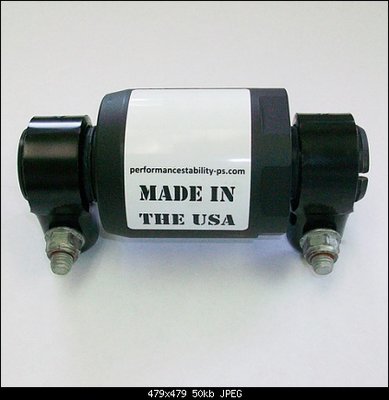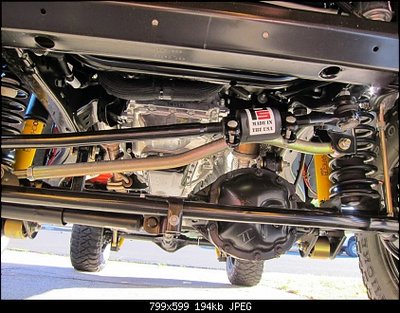It doesn't sound like they have any added damping over the rubber/poly spring natural damping. It seems great for improving some ride quality, but it would definitely degrade steering system performance. Any significant emergency manuver would provide enough force to displace the spring and slow the vehicle response. I am sure that the failure mode is a captured steering system but then it could possibly have a 1/2" or more of complete free play in both directions before any steering forces were applied. If you want a jeep to drive and feel like a car, don't buy a jeep. Don't lift the jeep if you do buy it. Don't put oversized wheels and tires on it. The steering column is the typical place for a system to help filter road noise. The rag joint was built for this. The correct steering damper would also take care of much of the same "noise and harness" without the ability to compromise safety.
This is the same company that makes many steering components for Vehicle manufacturers. From reading the patent it can actually improve the handling in an emergency maneuver.
Quote from the designer:
You are correct, we did not design the attenuator to fix steering problems. The attenuator was design to make short wheel base vehicles safer. That's why you can't purchase a short wheel base 2500 / 4500 GM truck over the past 4 years without compliant steering. We have over 400,000 trucks on the road with this concept and no warranty problems.
This attenuator was designed to reduce snap oversteer during sudden lane maneuvers giving the steering more linear response and a damped aftershock. I hope that many of you don't get to test the attenuator for these conditions that it was originally design for. If you do, I only hope it prevents a tragedy.
Everyone on this Forum has been enjoying the improved ride because of the reduced harshness that is felt from the road. This attenuator eliminated the direct steel path from wheel hub to the frame damping road harshness.
I guess this attenuator would look like snake oil to someone that might not understand the simple mechanics of this device. The cross section of the patent, that was displayed earlier on a forum thread, clearly outlines the simplicity of the design.
-Compliant
By tuning the spring rate of the steering attenuator assembly 36, the steering response can be varied. In other words, by tuning the amount of axial compression within the spring pocket, the dwell time of the response can be altered. In a vehicle prone to oversteer at highway speeds, it may be desirable to reduce the steering response in the on-center area of a steering response curve. An example of an achievable load-deflection curve of the steering attenuator assembly 36 is illustrated in FIG. 8. An example of an achievable steering response curve of the steering attenuator assembly 36 is illustrated in FIG. 9, illustrating lag or play in the on-center area of the steering response curve. In comparison to the steering response curve shown in FIG. 9, the steering ratio in a rigid system (i.e., without the steering attenuator assembly 36) is constant.




